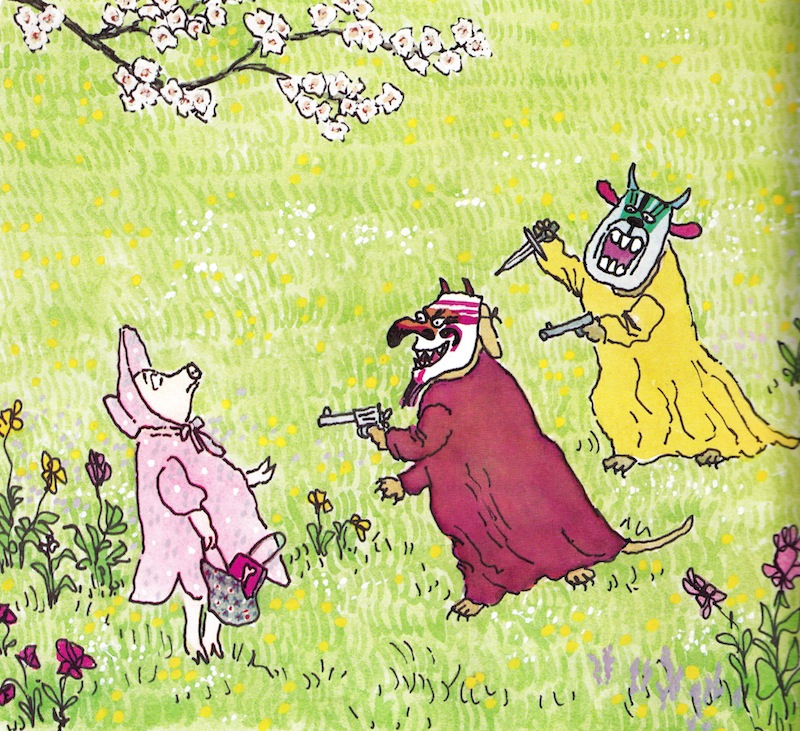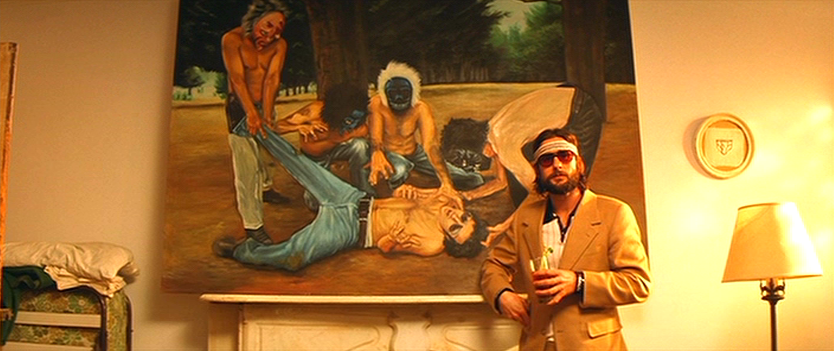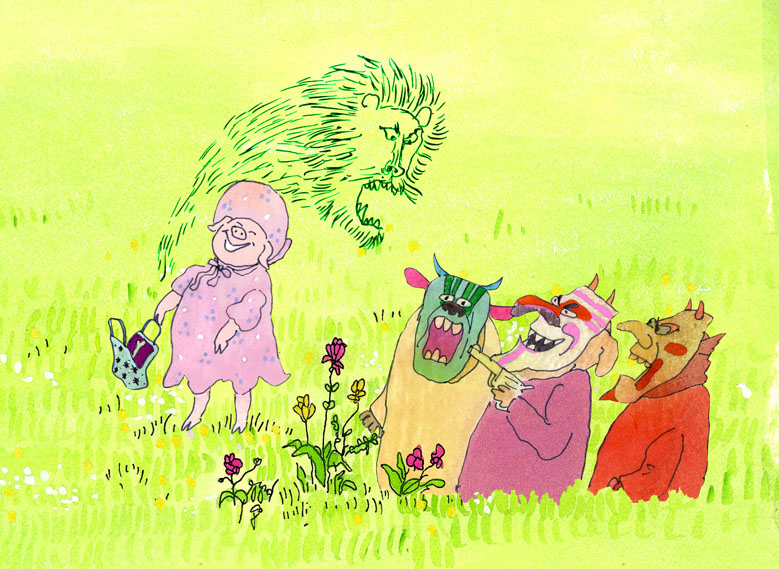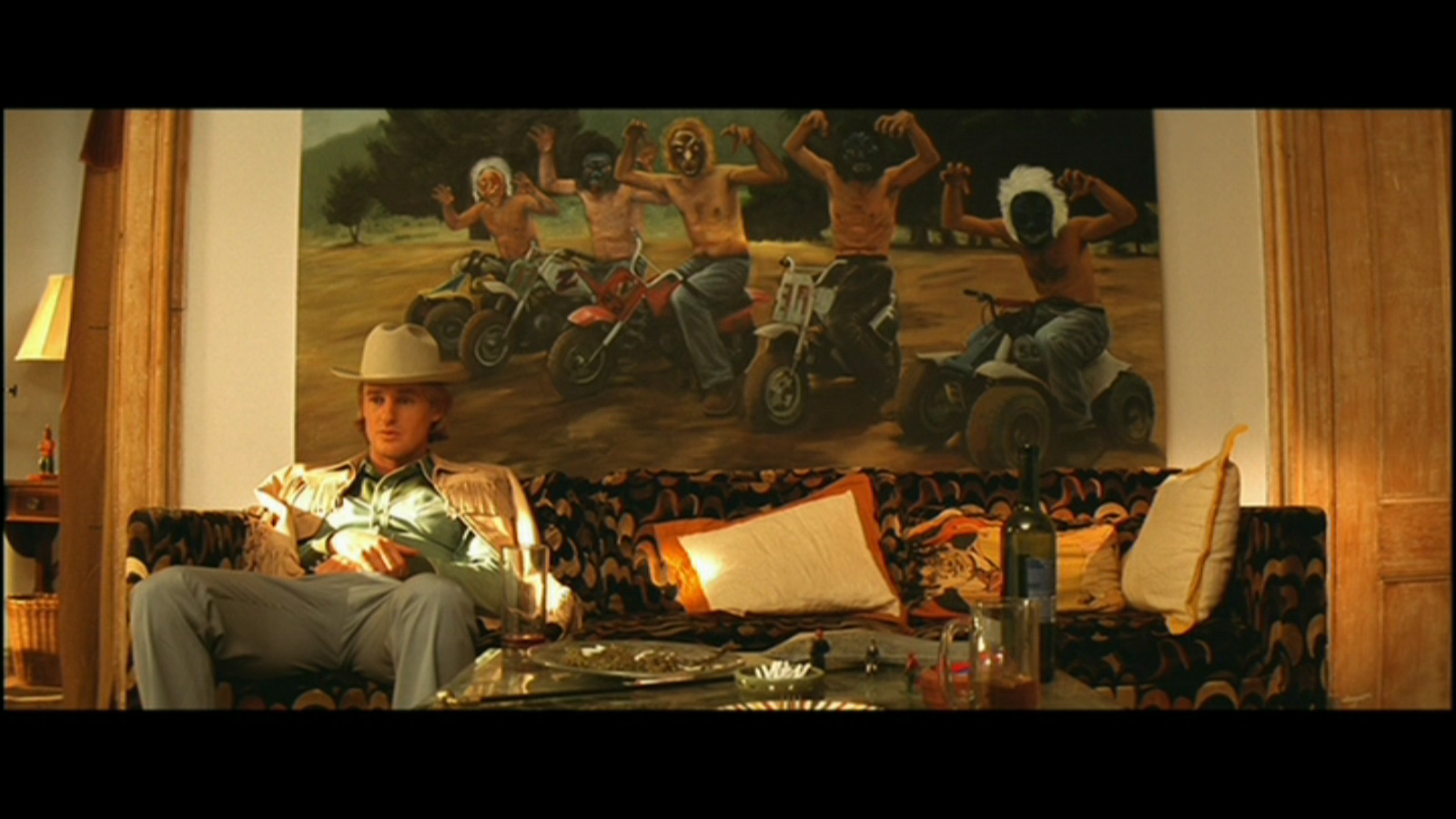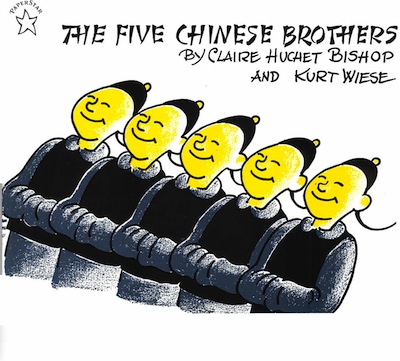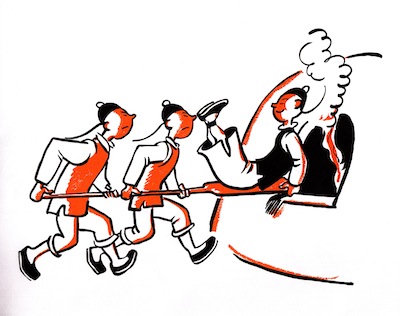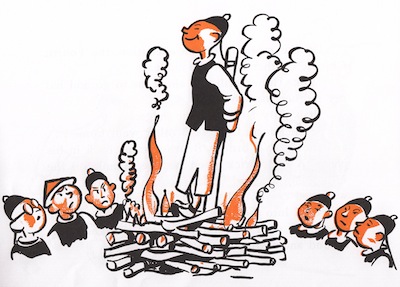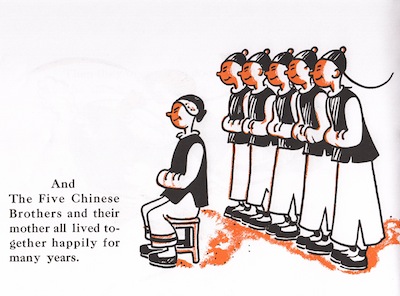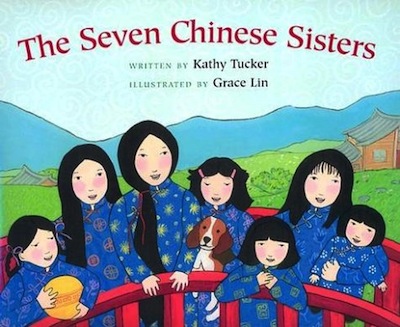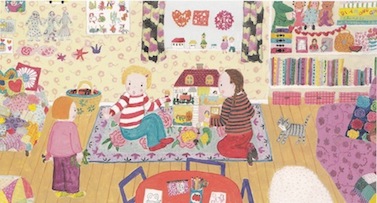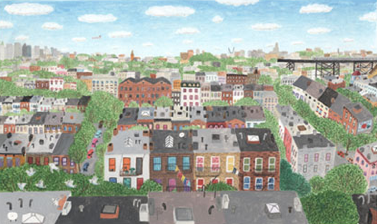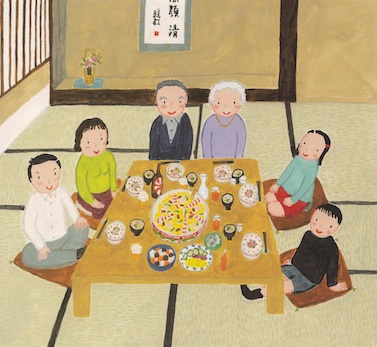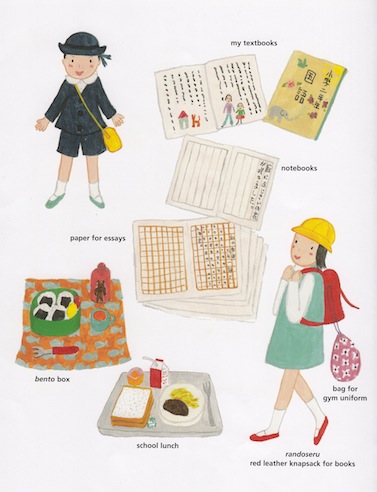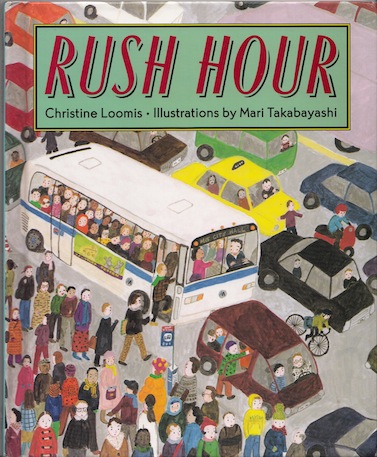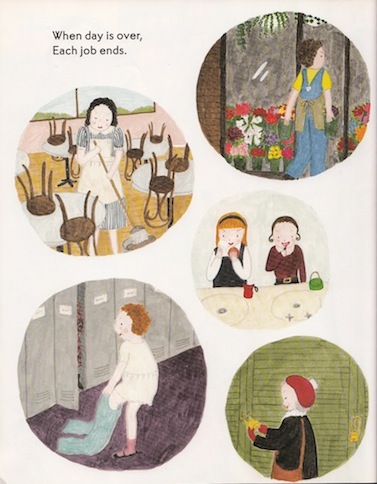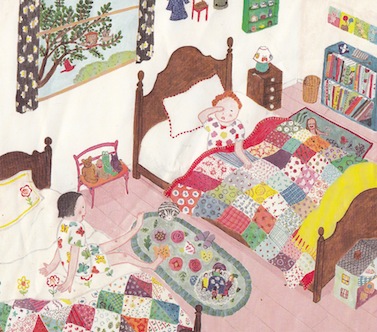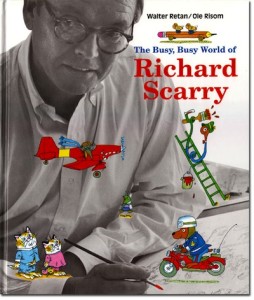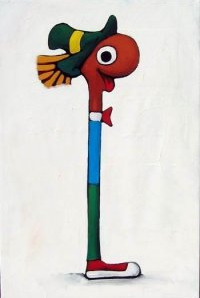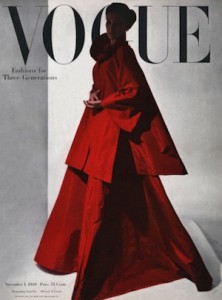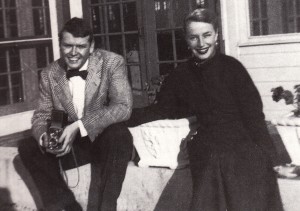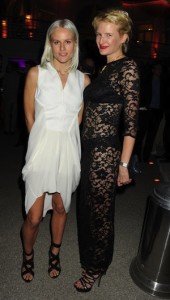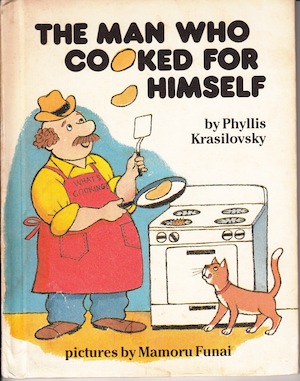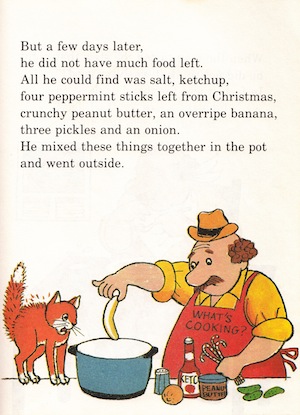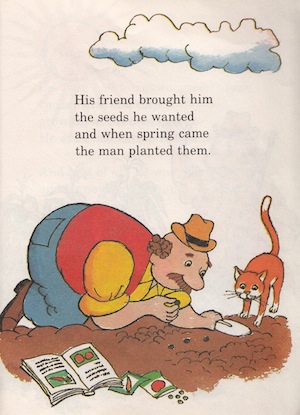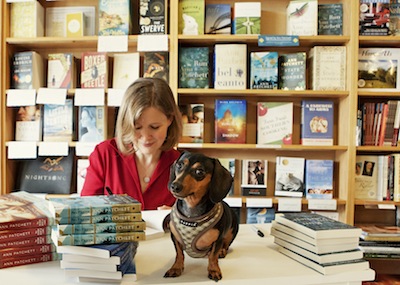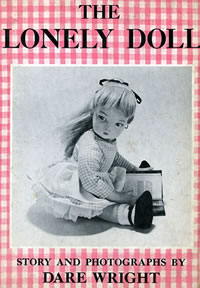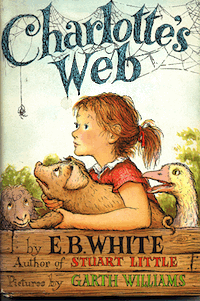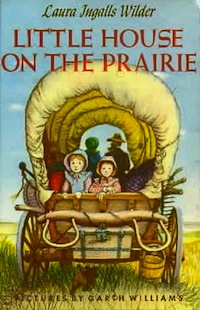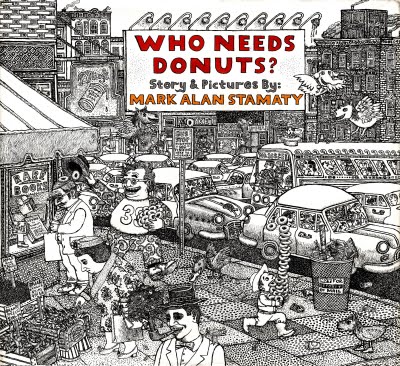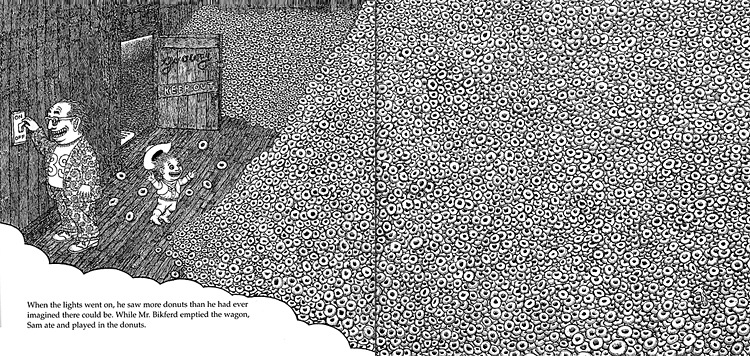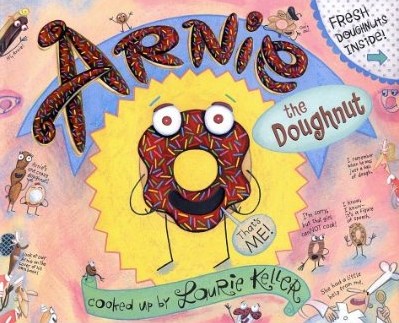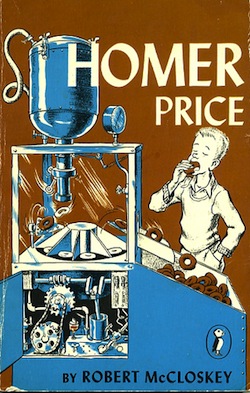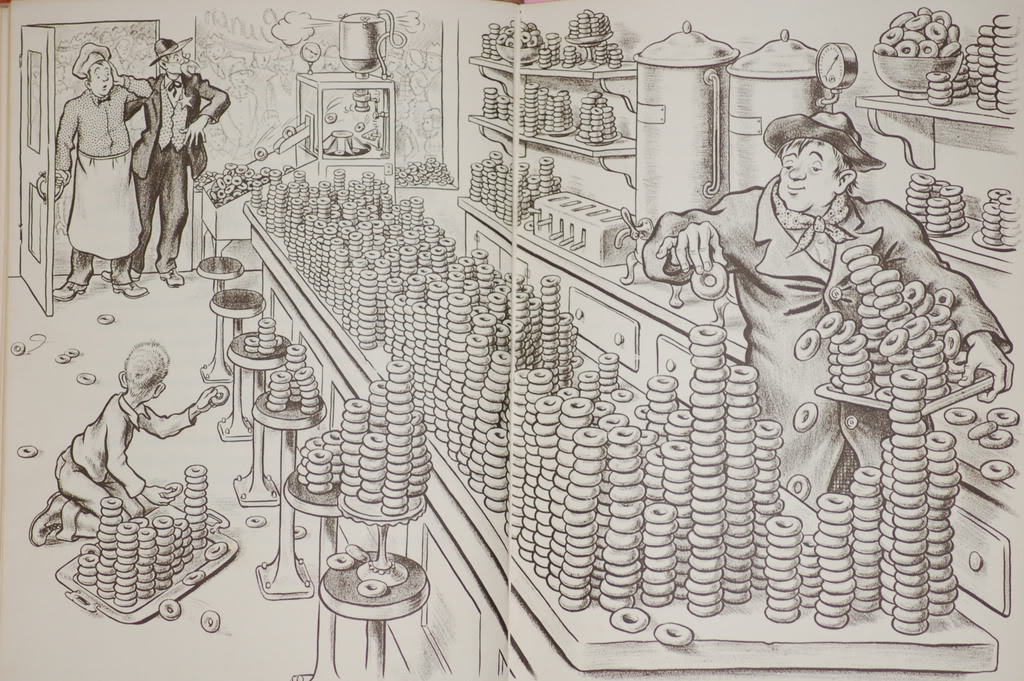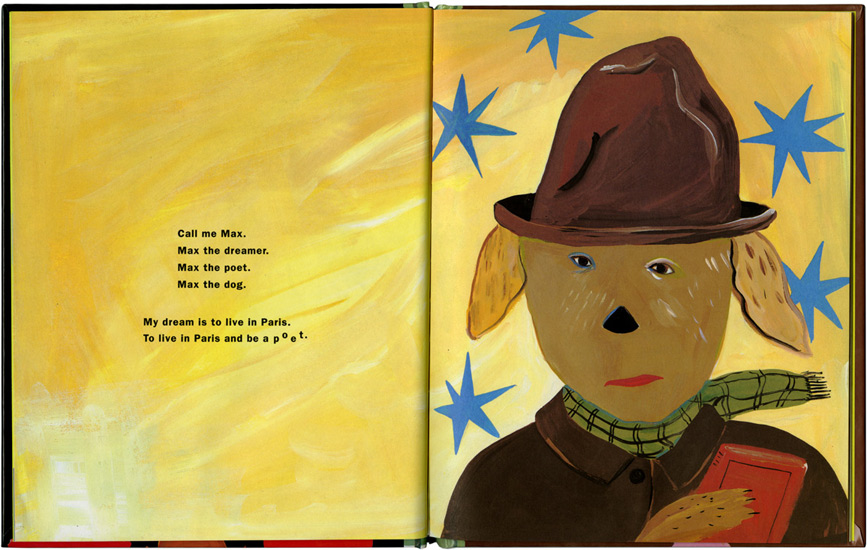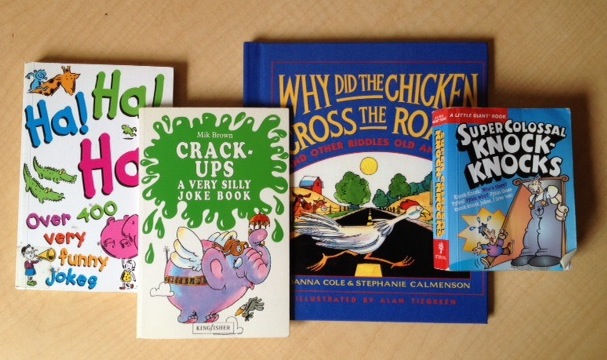 “Orange you glad I didn’t say banana?” If you have a child under the age of seven, you’ve probably endured a period where you heard that one every day. As these sort of jokes go, the orange/banana knock-knock is actually a pretty good one — which is not the case with most of what you find in kids’ humor collections. (The tip-off, of course, is anything promising “1,000 MORE of the Very Best Knock-Knock Jokes!”)
“Orange you glad I didn’t say banana?” If you have a child under the age of seven, you’ve probably endured a period where you heard that one every day. As these sort of jokes go, the orange/banana knock-knock is actually a pretty good one — which is not the case with most of what you find in kids’ humor collections. (The tip-off, of course, is anything promising “1,000 MORE of the Very Best Knock-Knock Jokes!”)
Failed jokes and riddles fall into many categories. There are, for starters…
The ones that presume familiarity with obscure phrases. What’s a ghost’s favorite kind of music? Haunting melodies. Why did the boys shoot their BB guns in the air? They wanted to shoot the breeze.
The ones that presume knowledge of farm life. What did the little calf say to the haystack? Are you my fodder? (My little city chickens have never heard the word “fodder”)
The ones that presume knowledge of U.S. geography. What’s the capital of Alaska? Come on, Juneau this one! (Sadly, we didn’t.)
The ones that presume knowledge of the Bible. Who was the only character in the Bible without a father? Joshua, because he was the son of Nun. (I had to to do a Google search to even understand this.)
The ones that presume familiarity with Telly Savalas. Knock-knock. Who’s there? Hugh. Hugh who? Hugh loves ya baby! (I swear, this was in a joke book published in 2007!)
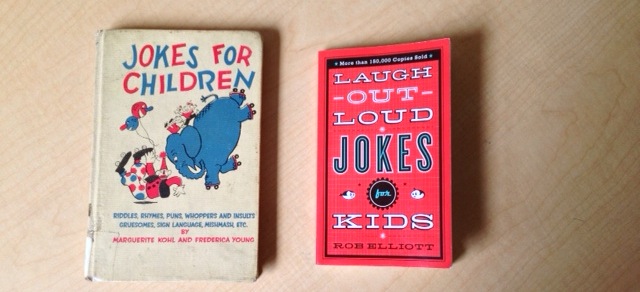 Of the humor books I’ve scoured, my favorite so far is Laugh Out Loud Jokes for Kids by Rob Elliott ($4.99, Spire) which has a better ratio of groaners to good ones than most. (What do you get from a pampered cow? Spoiled milk.) I was also happy to stumble upon the thoroughly fascinating — if at times offensive — 1963 collection Jokes For Children by Marguerite Kohl and Frederica Young. This out-of-print-book is full of quaint classics, but also jokes so violent you can scarcely believe they were meant for kids. In the “Whoppers and Insults” chapter you get stuff like: Want to lose ten pounds of ugly fat? Sure. Cut off your head. Here’s a disturbing one: Father: Broke my kid of biting his nails. Friend: You did– how? Father: Knocked his teeth out. There’s even a section called “The Little Moron.”
Of the humor books I’ve scoured, my favorite so far is Laugh Out Loud Jokes for Kids by Rob Elliott ($4.99, Spire) which has a better ratio of groaners to good ones than most. (What do you get from a pampered cow? Spoiled milk.) I was also happy to stumble upon the thoroughly fascinating — if at times offensive — 1963 collection Jokes For Children by Marguerite Kohl and Frederica Young. This out-of-print-book is full of quaint classics, but also jokes so violent you can scarcely believe they were meant for kids. In the “Whoppers and Insults” chapter you get stuff like: Want to lose ten pounds of ugly fat? Sure. Cut off your head. Here’s a disturbing one: Father: Broke my kid of biting his nails. Friend: You did– how? Father: Knocked his teeth out. There’s even a section called “The Little Moron.”
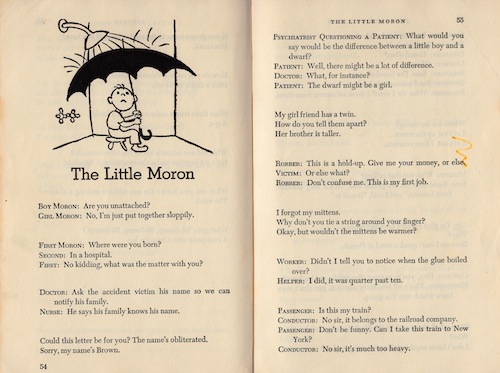 I recently did a call out to friends, asking for their favorite kids’ jokes. I think these are all winners but feel free to argue.
I recently did a call out to friends, asking for their favorite kids’ jokes. I think these are all winners but feel free to argue.
15 NO-FAIL KIDS’ JOKES*
1. What did the flounder say to the shrimp? “You’re being shellfish.”
2. What time is it when you get a toothache? Tooth-hurty.
3. What do you call a pig who knows karate? Pork chop.
4. What letters contain nothing? M-T
5. What does a snowman eat for breakfast? Frosted Flakes
6. When can you knock over a full glass and not spill any water? When it’s full of milk.
7. Why is 2 + 2 = 5 like your left foot? It’s not right.
8. Why did the chewing gum cross the road? It was stuck to the chicken.
9. What do you call a deer with no eyes? No eye-deer (no idea).
10. Which are the two coldest letters? I-C
11. What did 0 say to 8? Nice belt.
12. How do you spell “ninjas?” S … because the ninja is silent.
13. Knock-knock. Who’s there? Isabel. Isabel who? Is the bell broken? I had to knock.
14. Knock-knock. Who’s there? Interrupting cow. Interrupting c—–Moo! (interrupts)
15. What word is always pronounced wrong? Wrong.
BONUS (apologies in advance): What is the most constipated condiment? Mus-turd.
Did I miss any good ones? Please let me know in the comments below.
*Special credit goes to our pediatrician and Sam & Daisy Harris
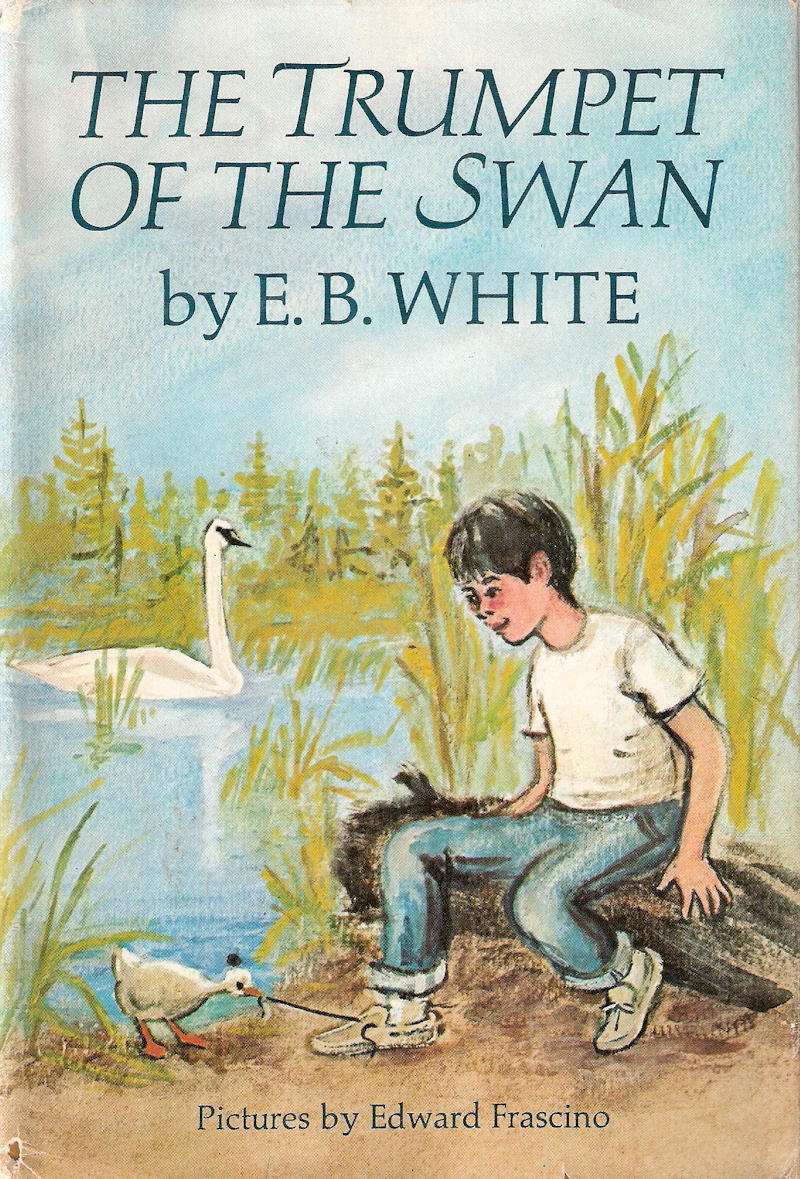 Remember in The Trumpet of The Swan, when slippery Abe “Lucky” Lucas hires Louis to perform in a Philadelphia nightclub? (This comes after Louis’s success with the swan boats at the Boston Public Garden.) Louis takes the new gig because he needs the cash to pay his debts, but…
Remember in The Trumpet of The Swan, when slippery Abe “Lucky” Lucas hires Louis to perform in a Philadelphia nightclub? (This comes after Louis’s success with the swan boats at the Boston Public Garden.) Louis takes the new gig because he needs the cash to pay his debts, but…
